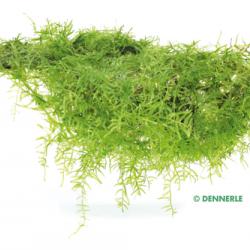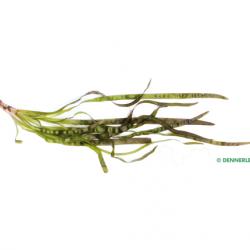Einfach

Vesicularia ferriei – Weeping Moos In-Vitro
 Lighting
Lighting
 Color
Color
 Position
Position
 22 - 28 °C
Temperature
22 - 28 °C
Temperature
 CO2
CO2
 langsam
Growth
langsam
Growth
Family:
Hypnaceae
Species:
Vesicularia
Type:
Moos
Hardly any other moss is as popular as the Java moss, Vesicularia ferriei. The commercial name ´Weeping Moos´ refers to the drooping fronds of this attractive moss. Ideally the moss is attached to roots or stones, where it quickly takes hold with fine holdfast roots. By trimming the moss cushion regularly, wonderful layouts can be created. Little miniature trees made of delicate roots and the weeping moss as the „treetop“ are a particular art form. This beautiful moss is very easy to care for and resilient.














